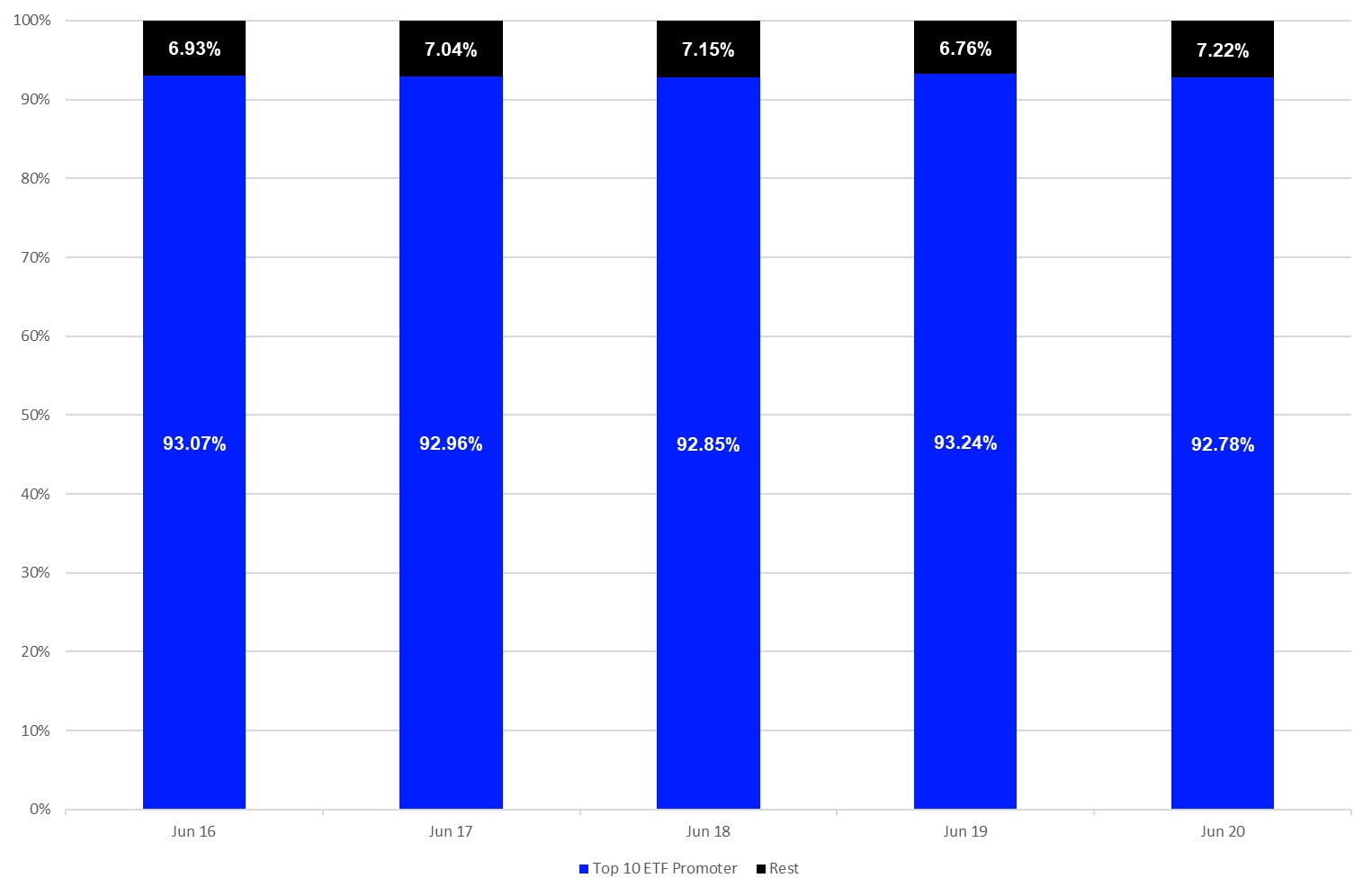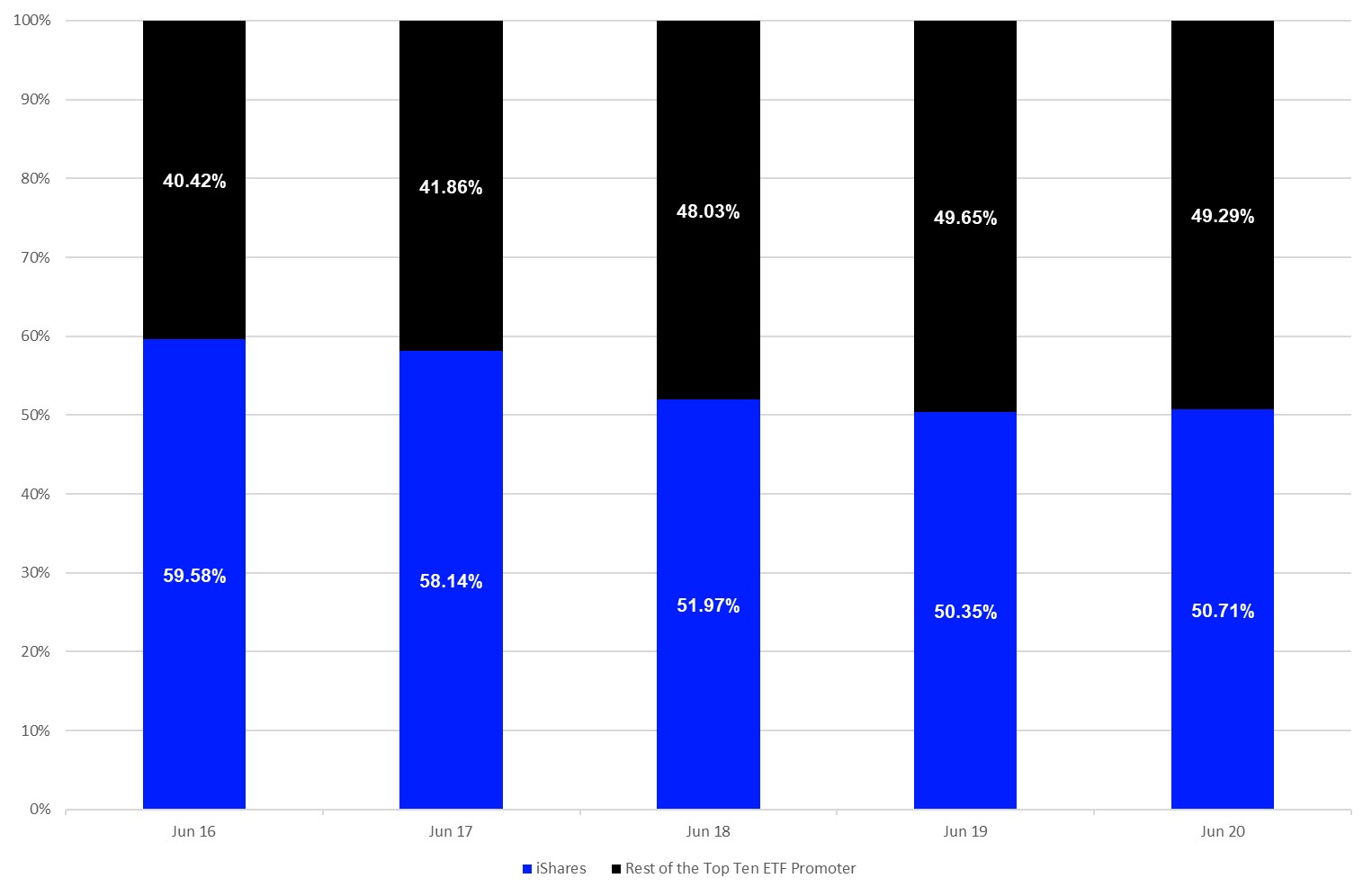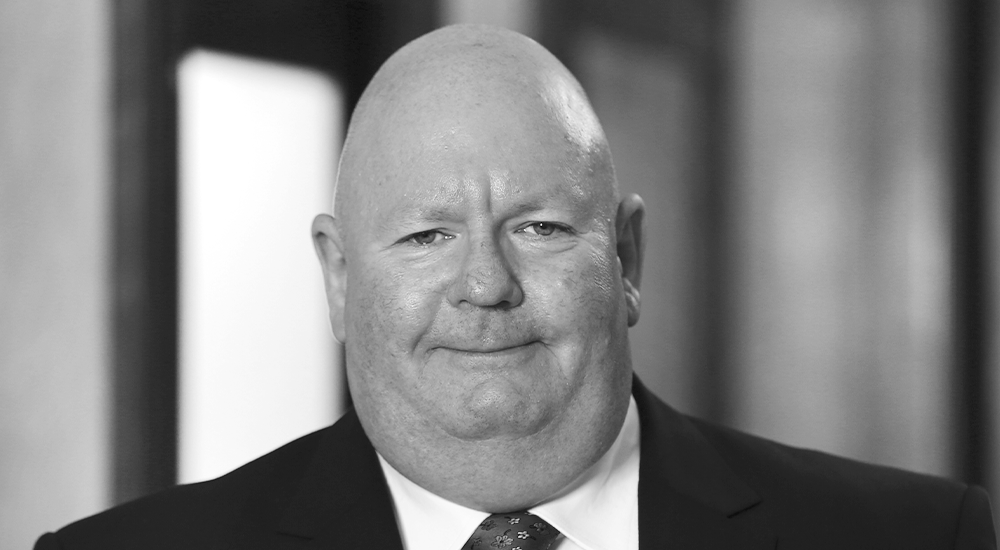Investors, market observers, and regulators always raise questions about the competitiveness of the European exchange-traded fund industry since the assets under management (AUM) seem to be concentrated among a few ETF issuers.
Generally speaking, I would agree with the statement that one needs to be concerned if a few players are dominating a market, but not with regard to the European ETF industry.
Graph 1 depicts the fact that the European ETF industry is highly concentrated at the promoter level since the 10-top promoters in Europe held between 93.07% (June 30, 2016) and 92.78% (June 30, 2020) of the overall AUM in the analysed period.
Meanwhile, the AUM increased from €393.1 bn to €830.3 bn over the same period. In addition, it is noteworthy that the number of ETF issuers with at least one ETF registered for sale in Europe increased from 36 to 49 despite some mergers of promoters in the analysed five-year period.
Graph 1: Market Share (%) at the Issuer Level by AUM (June 30, 2016 – June 30, 2020)

Source: Refinitiv Lipper
Even worse, as graph 2 depicts, BlackRock – the largest ETF issuer in Europe – accounts in all five periods for more AUM than the other nine of the 10-top promoters combined.
Despite the fact that the respective market share from BlackRock compared to the combined market share of the other nine issuers of the top 10 has declined over the analysed five-year period, it has maintained a very dominant market position.
In any other industry, such a high concentration would be concerning for regulators and clients, as this may lead to a monopoly or an oligopoly, which might bring prices up and/or quality down.
Graph 2: Market Share (%) BlackRock vs the Combined Other Top Nine Issuers by AUM (June 30, 2016 – June 30, 2020)

Source: Refinitiv Lipper
This means it would require a merger of all nine promoters to create a new rival for BlackRock as the most dominant player in the European ETF industry. Such a move, however, would create an even larger gap between the two top ETF issuers and the rest of the European ETF industry.
Rather than the aforementioned scenario, we witness falling management fees and a very good quality of products with regard to their tracking of the underlying indices.
In comparison to their actively managed peers, it needs to be said that the European ETF industry looks way more competitive than the European fund industry overall.
This is because actively managed funds experienced increasing management fees, even as the concentration of assets under management is way lower than in the ETF space.
That said, the ongoing discussion about the value added by active management and the high fees charged by the asset managers, in combination with the rise in popularity of ETFs, seems to drive down the overall costs in this market segment.
At the same time, the falling management fees for core markets are a concern for some market observers since they see the current fee levels for core products as a barrier for entry for new ETF promoters in this segment.
Given the high product quality with regard to index tracking ETFs, management fees and total expense ratios have become a key criterion in the fund selection process and drove prices down to a point where only asset managers with decently scaled products could earn money.
Even worse, large ETF issuers could subsidise core products over a given time period to gain a competitive advantage over smaller issuers who might not be able to afford such a pricing policy.
As the core markets are by nature those markets which are attracting the most investor money, such behaviour by the large ETF promoters can foster a further market concentration, as new ETF promoters may rather launch niche products to avoid the competition with the market leaders.
Nevertheless, new market participants are able to gather significant amounts of inflows at the ETF level, especially with innovative investment solutions for core and niche markets. This means that the barriers to enter the market are not too high for new ETF promoters.
Despite all of this, one needs to ask the question of whether all of the new market participants will be able to survive in such a competitive environment.
With regard to this, it can be seen as a sign of the maturity of the market if an ETF promoter is absorbed by a competitor or is going out of business.
As I said before, I am not concerned about the current concentration of the European ETF industry since it is clear that there is strong competition between the different fund promoters.
The investors in Europe can enjoy some advantages from this competition. But I also see that the competition with regard to management fees allows for some creativity at the promoter level, as the majority of ETF promoters have implemented securities lending programs to earn additional income.
These strategies are marketed as value-added strategies for investors, as the promoters do share the income from the securities lending with the investors.
From my point of view, however, it is questionable whether these kinds of strategies should be used within investment products that are sold to retail investors.
Detlef Glow is head of EMEA Lipper research at Refinitiv and was named in ETF Stream's Industry 30 2020



